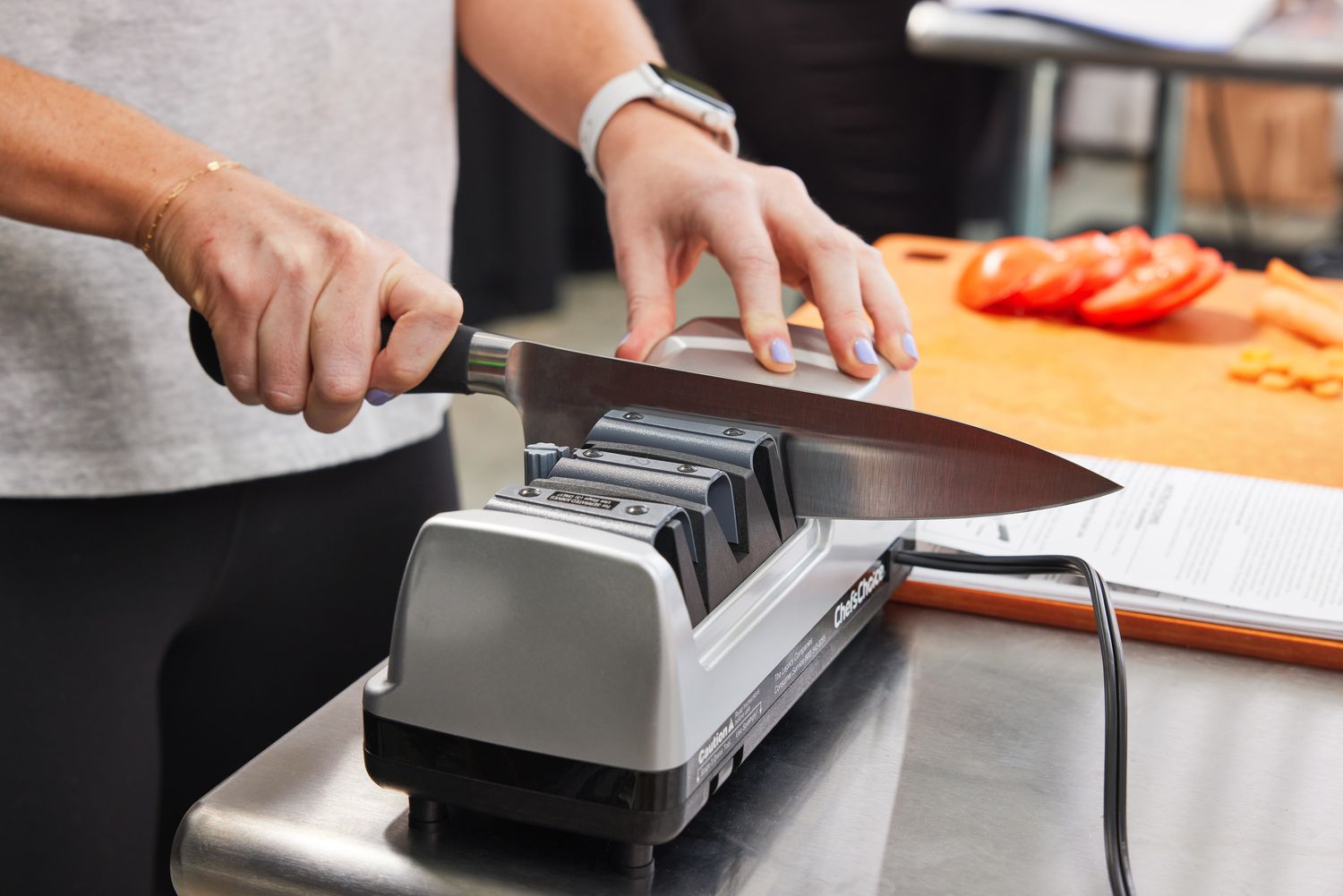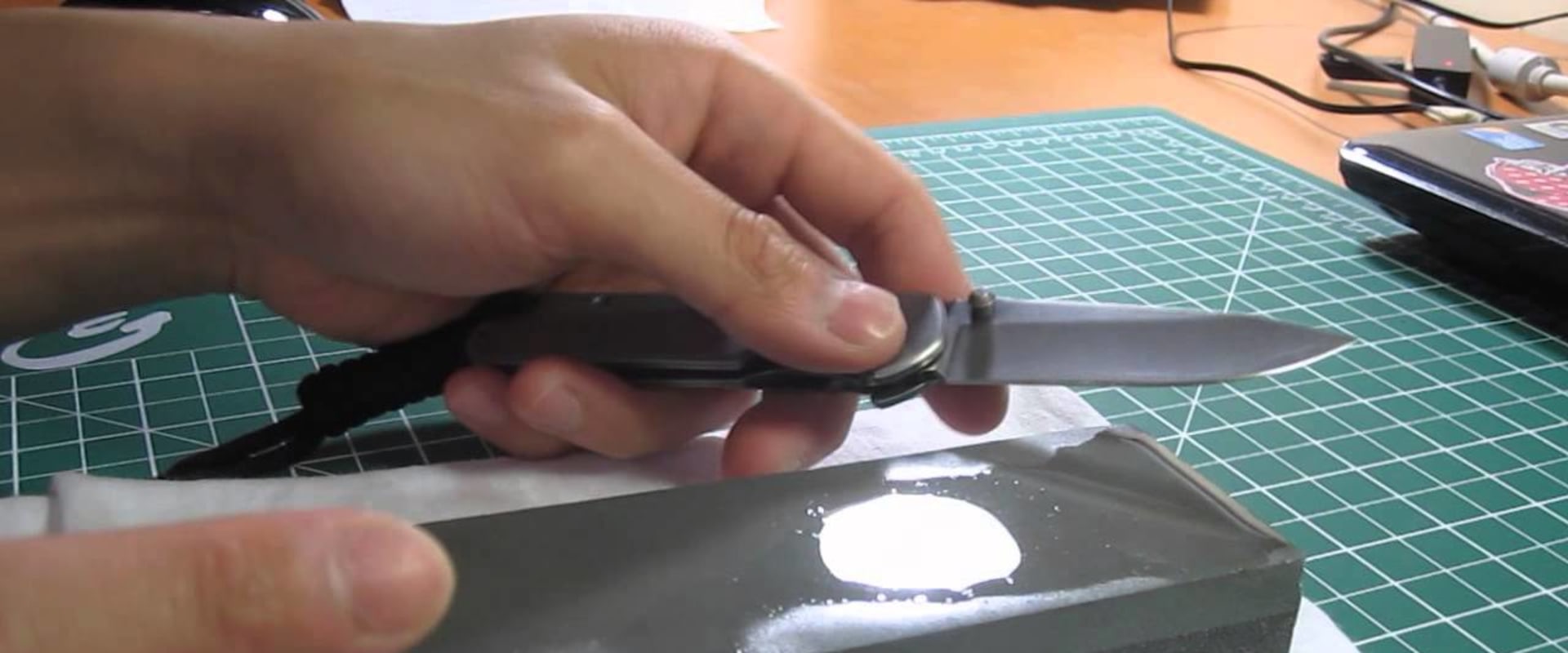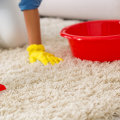Firstly, we will provide an in-depth examination of the various types of sharpening stones available for water knife sharpening. From natural stones to synthetic alternatives, we will elucidate the nuances of each, empowering you with the knowledge to choose the perfect sharpening stone for your needs.
While we uncover the intricacies of water knife sharpening, we will also address common mistakes that many enthusiasts encounter on their quest for sharpness. Understanding these pitfalls is crucial to achieving optimal results, and we will equip you with the knowledge to sidestep them effectively.
Now, in your pursuit of sharpening excellence, we recommend exploring additional resources to complement your newfound expertise. For those located in the vibrant city of Los Angeles, "Knife Sharpening Los Angeles" can be your trusted partner in ensuring your knives are sharpened to perfection. You can find more information about their services and expertise by visiting their website at https://knifesharpeninglosangeles.com/.
So, join us on this scientific journey as we unravel the mysteries of water sharpening and discover if this age-old technique can indeed be harnessed with precision and efficiency, all while ensuring that your knives are finely honed to meet your culinary needs.
TLDR
- Water sharpening enhances blade longevity by minimizing metal removal during sharpening.
- Water sharpening maintains precision in knife edges by providing a consistent and controlled cooling effect.
- Water sharpening reduces the risk of overheating by dissipating heat through water.
- Water sharpening preserves the temper of the blade and prevents negative impacts on hardness and performance.
Benefits of Water Sharpening
When it comes to sharpening knives, water sharpening has proven to offer several benefits.
Firstly, it enhances blade longevity by minimizing the amount of metal removed during the sharpening process. This ensures that the knife edge remains strong and durable over time.
Secondly, water sharpening maintains precision in knife edges by providing a consistent and controlled cooling effect during sharpening, preventing overheating and potential damage to the blade structure.
Lastly, this method reduces the risk of overheating by dissipating heat through water, which helps preserve the temper of the blade and prevents any negative impact on its hardness and overall performance.
Enhanced Blade Longevity
Using water to sharpen a knife can increase its blade longevity. Proper blade care and maintenance are essential for maximizing the lifespan of a knife.
When it comes to sharpening techniques, the honing process using water stones offers several benefits. Water stones provide a consistent and precise sharpening angle, resulting in a sharper edge. They also remove less material from the blade compared to other methods, preserving its structural integrity.
However, safety precautions must be taken when using water stones. It is important to select the right stone based on the type of knife and desired sharpness level. Additionally, avoiding common mistakes such as applying excessive pressure or using incorrect angles can help maintain the blade's durability.
Maintaining Precision in Knife Edges
To maintain precision in your knife edges, it's essential to regularly check for any signs of dullness or damage.
One effective method for sharpening knives is water sharpening, which offers several benefits such as enhanced blade longevity and reduced risk of overheating.
Water sharpening involves using specific types of sharpening stones that require proper maintenance. There are two main types of stones used in water sharpening: oil stones and water stones.
Oil stones offer durability but require the use of oil as a lubricant, while water stones provide faster cutting action but may wear down faster.
Mastering water knife sharpening requires essential tools and materials such as a stone holder, honing guide, and a flattening stone.
When choosing the right stone for your needs, consider factors such as grit size and hardness to achieve the desired sharpness for your knives.
Reduced Risk of Overheating
To prevent overheating, it's important to choose the right type of stone for your sharpening needs. Water stones are a popular choice due to their reduced risk of overheating during the sharpening process. These stones offer several benefits, including enhanced longevity of your knives and the ability to maintain precision in their edges. Water stones come in different grits, allowing you to customize the level of abrasiveness for your specific needs. However, proper maintenance is key when using water stones as they require regular flattening and soaking before use. It's also important to consider the pros and cons of water stones, such as their tendency to wear down faster compared to oil stones. By mastering techniques and understanding the different types of stones available, you can achieve optimal results while minimizing the risk of overheating your knives.
| Types of Stones | Benefits | Proper Maintenance |
|---|---|---|
| Water Stones | Reduced risk of overheating; Enhanced longevity; Maintaining precision | Regular flattening and soaking required |
| Oil Stones | Long-lasting; Versatile for different blades | Requires oil lubrication; Slower cutting speed |
| Diamond Stones | Durable; Fast cutting speed | No additional maintenance needed |
Table: Comparison of Different Types of Sharpening Stones
Types of Sharpening Stones
When it comes to sharpening stones, there are two main types to consider: oil stones and water stones.
Oil stones are typically made from materials like aluminum oxide or silicon carbide, and they require the use of oil as a lubricant during sharpening.
On the other hand, water stones are usually made from natural materials like novaculite or synthetic abrasives, and they utilize water as their lubricating medium.
In this discussion, we will compare the benefits and drawbacks of using oil stones versus water stones for knife sharpening purposes.
Water Stones
In our discussion on water stones and their use in knife sharpening, it is important to consider two key points: different grit levels and proper maintenance.
The various grit levels available for water stones play a crucial role in determining the sharpness and quality of the knife edge.
Additionally, understanding the importance of proper maintenance techniques will ensure that the water stone remains effective and efficient in sharpening knives over time.
Different Grit Levels
There's a variety of grit levels available for sharpening knives using water.
Coarse grit stones (1000-2000) are used to repair damaged edges and remove chips.
Medium grit stones (3000-6000) are ideal for regular sharpening and maintenance.
Fine grit stones (8000+) provide a polished, razor-sharp edge.
Extra fine grit stones (12000+) create a mirror-like finish.
Different techniques, such as maintaining the optimal angle and using sharpening jigs, enhance the honing process.
Proper blade care, water stone maintenance, and sharpening stone storage contribute to longevity.
Additionally, selecting the right sharpening stone and exploring honing oil substitutes can further improve results in knife sharpening.

Proper Maintenance
To properly maintain your sharpening stone, it's important to regularly clean and dry it after each use. This helps to remove any metal particles or debris that may have accumulated during the sharpening process. In addition, proper maintenance includes sharpening knives at the correct frequency and angle, storing them properly to prevent damage, using lubrication for smoother sharpening, and knowing when to hone versus sharpen. Signs of a dull blade include decreased cutting performance and increased effort needed. Knife maintenance tools such as honing rods and knife sharpeners can aid in keeping your blades in optimal condition. It is also important to maintain knife balance for efficient and safe use. Lastly, serrated knives require special attention when sharpening due to their unique blade design.
| Keyword | Description |
|---|---|
| Sharpening frequency | Regularly sharpen knives according to usage patterns for optimal performance |
| Correct sharpening angle | Sharpen blades at the appropriate angle (typically 20 degrees) for maximum cutting efficiency |
| Storing knives properly | Store knives in a knife block or magnetic strip to protect the blades from damage |
| Importance of lubrication | Apply lubricant (such as mineral oil) on the stone before sharpening to reduce friction |
| Using a knife sharpener | Utilize a quality knife sharpener for quick and efficient blade maintenance |
| Honing vs. sharpening | Understand the difference between honing (aligns blade edges) and actual blade reshaping |
| Signs of a dull blade | Identify signs like decreased cutting performance and increased effort required |
| Knife maintenance tools | Have essential tools like honing rods, whetstones, or electric knife sharpeners ready |
| Maintaining knife balance | Ensure proper weight distribution by maintaining even bevels on both sides of the blade |
| Sharpening serrated knives | Use a special sharpening tool or send serrated blades to professionals for proper maintenance |
Oil Stones vs. Water Stones
When considering the choice between oil stones and water stones for sharpening knives, it is important to weigh the pros and cons of each option.
Oil stones offer a slower and more controlled sharpening process, allowing for greater precision in achieving desired results. However, they require the use of oil as a lubricant, which can be messy and leave residue on the knife.
On the other hand, water stones provide a faster sharpening experience with less mess, but they tend to wear down more quickly and may require frequent flattening.
Ultimately, the decision between oil stones and water stones depends on personal preference and specific sharpening needs.
Pros and Cons
If you choose to sharpen your knife with water, the pros include ease of use and reduced risk of accidents.
Water stones are effective in achieving a sharp edge due to their abrasive nature.
The technique involves soaking the stone in water and lubricating it during the sharpening process.
Results are often efficient, as water helps wash away debris.
However, learning this skill may have a slight learning curve as mastering the correct angle is crucial for optimal results.
Mastering Water Knife Sharpening
When it comes to mastering water knife sharpening, there are two key aspects that need to be considered: essential tools and materials, as well as safety measures.
The right tools and materials are crucial for achieving a sharp and precise edge on your knives.
Additionally, practicing proper safety measures ensures that you can sharpen your knives effectively while minimizing the risk of accidents or injuries.
Essential Tools and Materials
When it comes to sharpening knives, choosing the right stone is crucial. Different types of stones have varying levels of hardness and grit, which can impact the sharpness and durability of the blade.
Understanding the honing techniques for each type of stone is equally important, as it determines the angle and pressure at which the knife should be sharpened to achieve optimal results.
Choosing the Right Stone
Choosing the right stone for sharpening a knife can make all the difference in achieving a sharp and precise edge. Stone selection is crucial, as different stones have varying levels of hardness and coarseness.
Wet vs dry sharpening is a debate that depends on personal preference and the type of stone being used.
Proper angle grinding ensures consistent results and prolongs the life of the blade. Using a honing guide helps maintain the correct angle throughout the sharpening process, resulting in better edge retention.
Honing Techniques
Using a honing rod regularly can help maintain the sharpness of the knife's edge.
Honing techniques are essential for proper maintenance and extending blade longevity.
It is important to understand the correct blade angles and use appropriate sharpening stones with different grit levels.
While water sharpening can be effective, caution must be taken to prevent overheating.
Safety Measures
When it comes to safety measures in woodworking, protecting our hands and handling sharpened blades safely are of utmost importance.
Our hands are vulnerable to injuries from accidental slips or contact with sharp edges, so wearing proper protective gloves is crucial.
Additionally, when using sharpened blades, we must exercise caution and follow correct techniques to minimize the risk of accidents and ensure a safe working environment.
Protecting Your Hands
To keep your hands safe, make sure you always wear protective gloves when sharpening a knife.
Use proper hand positioning to maintain control and minimize the risk of accidents.
Practice different grip techniques to find the most comfortable and secure one for you.
Consider using finger guards or thumb guards for added protection against accidental slips.
Remember that proper knife handling and grip are essential in preventing hand injuries during sharpening processes.
Handling Sharpened Blades Safely
Remember, it's important to handle sharpened blades with caution to avoid any potential accidents or injuries. When it comes to blade care and knife maintenance, safety precautions should be a top priority.
Proper hand protection is vital when sharpening techniques are employed, as well as selecting the right stone for the job. Maintaining the correct blade angle and employing effective honing methods are crucial in avoiding common mistakes and ensuring a safe sharpening process.
Common Mistakes to Avoid
When it comes to knife maintenance, there are several common mistakes that people often make.
One of these is overusing the sharpening stone, which can lead to excessive removal of metal and a shorter lifespan for the blade.
Additionally, inadequate blade angles can result in poor cutting performance and increased risk of accidents.
Lastly, neglecting proper maintenance, such as cleaning and lubricating the knife regularly, can cause corrosion and dullness over time.
It is crucial to be aware of these mistakes in order to ensure the longevity and effectiveness of your knives.
Overusing the Sharpening Stone
Using water excessively while sharpening a knife on a stone can lead to ineffective results. When it comes to sharpening stones, overuse can actually hinder the sharpening process and damage the blade. Here are four key points to consider when using sharpening stones for knife maintenance:
- Proper Sharpening Technique: It's important to follow the correct technique when using a stone, including maintaining a consistent angle and applying even pressure.
- Blade Care and Sharpening Frequency: Regular blade care, such as cleaning and oiling, helps prevent dullness. Sharpen your knife only when necessary, as excessive sharpening can wear down the blade.
- Water Sharpening Myths: Contrary to popular belief, using excessive water does not necessarily improve the sharpening process. A small amount of water is sufficient for lubrication during sharpening.
- Alternative Sharpening Methods: While stones are commonly used for knife sharpening, there are other effective methods available, such as honing rods or electric sharpeners.
Inadequate Blade Angles
Maintaining proper blade angles is essential for effective knife sharpening and preventing damage. Inadequate blade angles can lead to reduced blade stability, poor edge retention, and an overall unsatisfactory sharpening process. To ensure optimal results, it is crucial to adjust the angle according to the specific requirements of the knife being sharpened. This can be achieved through the use of a honing guide or by developing a steady hand with experience.
When adjusting the angle, factors such as water absorption and blade thickness should also be considered. Water absorption can affect the stability of the blade during sharpening, so it is important to keep it in check. Additionally, blade thickness plays a role in determining the appropriate bevel angle for sharpening.
By paying attention to these details and using proper sharpening techniques with precise angle adjustment and blade alignment, you can achieve exceptional results while maintaining your knife's longevity and performance.
| Key Factors | Importance |
|---|---|
| Blade Stability | High |
| Edge Retention | High |
| Sharpening Techniques | Essential |
| Angle Adjustment | Crucial |
| Water Absorption | Considerable |
| Sharpening Process | Critical |
Word count: 124
Neglecting Proper Maintenance
Neglecting proper maintenance can lead to a decrease in blade performance and overall durability. To ensure your blades stay in optimal condition, follow these essential blade care practices:
- Rust prevention: Keep your blades dry and apply a thin coat of oil to protect against rust.
- Proper storage: Store knives in a knife block or sheath to prevent damage and maintain sharpness.
- Cleaning techniques: Wash blades by hand, avoiding harsh chemicals that can corrode the metal.
- Sharpening frequency: Regularly sharpen your blades using appropriate tools like honing rods or knife sharpening kits.
Choosing the right angle for sharpening is crucial for achieving a sharp edge. Using a honing guide can help maintain consistency throughout the process.
Frequently Asked Questions
How Long Does It Take to Sharpen a Knife Using Water?
Water is a viable option for sharpening knives. It is effective, easy to use, and prevents overheating. Additionally, water sharpening can fix dull knives and is suitable for various types of blades.
Can Any Type of Knife Be Sharpened Using Water?
Water can be used to sharpen a knife, but it may not be suitable for all types of knives. Wet stones or water baths are the recommended methods for water sharpening, and there are techniques to achieve a razor-sharp edge.
Is Water Sharpening Suitable for Both Professional Chefs and Home Cooks?
Water vs. Whetstone: Which is better for knife sharpening? We explore water sharpening techniques and its benefits for professional chefs. Additionally, we debunk common myths and discuss the impact of water sharpening on knife longevity.
Are There Any Specific Precautions to Take When Sharpening a Knife With Water?
When sharpening a knife with water, it is important to take precautions and follow the proper technique. Using the right equipment and safety measures ensures effectiveness. Maintenance is essential to avoid common mistakes. Alternative methods have advantages and disadvantages.
Can Water Sharpening Be Used on Serrated Knives as Well?
Yes, water sharpening can be used on serrated knives. It has pros and cons compared to traditional methods. To achieve a razor-sharp edge, use the right tools and avoid common mistakes. Expert tips suggest regular maintenance with water for optimal performance and longevity of serrated knife blades.







